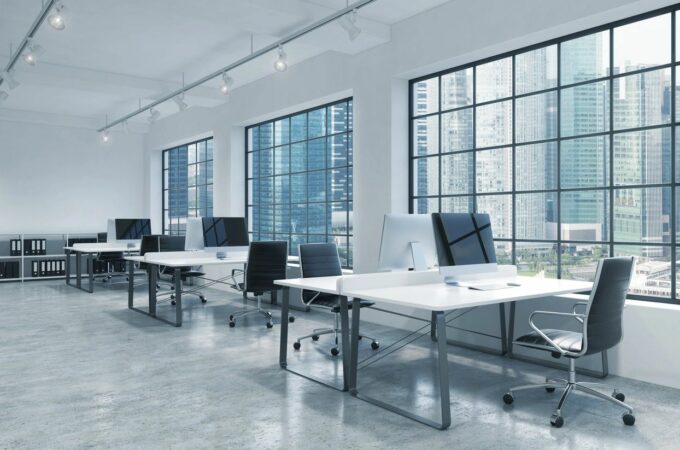
The New Normal: How Companies can support women as they return to post-COVID-19 work life.
Given all the profound events that have taken place in 2020, it is unlikely the world will “go back to normal” once COVID-19 is over. Instead, we’ll likely have a new normal – one we’ve already begun to build. In thinking about this new normal, I recently surveyed 325 women from all age groups to understand what they are looking forward to in a post-COVID-19 work environment. The insights from this brief study can be used to help organizations prepare for the new work environment that will undoubtedly emerge.
Women are ready to get back to work. Their reasons are diverse. Nearly 32% of female workers are looking forward to returning to work to see their coworkers in person again. Twenty percent of workers are looking forward to returning to a non-home office setting, and 19% want a break from their family members. Whatever the reason, companies will have to plan for the implications – women employees will need new support systems in place to help them adjust.
Below are just a few of the challenges that organizations will need to prepare to face.
Fewer people will work in the office: Workers will expect work from home policies to continue.
Before the pandemic, many companies struggled with offering work from home policies and several starting repealing them. Reasons for not providing work from home practices included lack of training or resources, remote management challenges, trust, accountability, and productivity issues. Then came COVID-19, and companies had to reconcile safety or previously held views on remote working. Things will never be the same. Once the COVID-19 pandemic is over, half of the women (52%) say they plan to continue going into the office while 16% expect to continue working remotely every day. Eight percent of women will work remotely one or two days a week. Nine percent will plan to work from home three days a week. Now is a great time to start working on the new HR and facilities management practices to accommodate this expectation.
Questions to consider:
Do your HR policies reflect sick leave to care for potentially impacted family members or self-quarantine requirements?
What are the productivity, cultural and financial impacts for an ongoing remote working process?
Productivity may go down: Make sure employees take a vacation and manage their workday.
Almost 80% of workers reported that they had not taken a vacation this year. As companies plan to reopen, many workers will be burnt out. They may need to take a vacation to recharge (even a staycation can help). At the same time, 14% of women are looking forward to working fewer hours and expect that they will work less once the pandemic ends. All of these factors contribute to lower productivity. Companies may want to take active steps to ensure that their employees are taking breaks for both their mental and physical well-being.
Questions to consider:
Have managers assessed the impact of mass vacation requests that need to be granted?
What are the financial considerations of delaying or banking vacation hours?
Retention may become an issue: Check in with your employees.
For over 52% of women, COVID-19 hasn’t changed how they view their career paths. That is excellent news, as companies can spend up to a third of an employee’s salary trying to replace her. However, over 30% of female workers are now re-thinking their career paths based on the pandemic. They have had time to reassess their aspirations, financial needs, and family priorities. Nearly 11% of women plan to make a career change, and 5% of women plan to change their employers. Key things that employers can do to retain employees through, and post, COVID-19 include checking in with them about their roles and career plans. In addition, taking steps to acknowledge and recognize an employee’s contributions and potential can go a long way. Also, creating an opportunity for dialogue may provide insight into what the employee is thinking and feeling.
Questions to consider:
Have managers met with employees to discuss performance and development goals?
Do you have internal data on how COVID-19 has impacted intent-to-stay among your workforce?
Facilities expenses and investments will continue: make sure your employees understand they will be safe at work.
Companies have taken great strides to ensure that workplaces are sanitized and that employees are provided adequate personal protective equipment if they must come to workplace settings. But now is not the time to cut back. Over 82% of female employees believe that these investments to keep employees safe should continue after COVID-19. The expenses associated with keeping employees safe at the office will likely continue, and it will serve companies well to communicate and demonstrate their ongoing commitment to the health and safety of their employees and customers.
Questions to consider:
Do your employees understand and accept your post-COVID-19 sanitation and cleaning protocols?
Will a post-pandemic environment require additional safety expenses for your employees?
“Never allow waiting to become a habit. Live your dreams and take risks. Life is happening now.” Paulo Coelho
*About the survey: 325 Women, North America, Fielded July 7, 2020
By Dr. Candace Steele Flippin
Candace is a nationally recognized communications executive, multigenerational workplace scholar, TEDx speaker, and author. Her research helps to a bridge across generation gaps so that Generation Z, Millennials and Generation X women can get the most out of their career paths. To learn more visit https://candacesteeleflippin.com/.
Recommended
-
Female Real Estate Investors P...July 18th, 2024
-
Home Maintenance Tips To Save ...July 3rd, 2024
-
Is Perfectionism Keeping You F...June 20th, 2024
-
FIVE MONTHS FROM TODAY ~ SAVE ...May 23rd, 2024
-
Being Formidable!May 20th, 2024
















